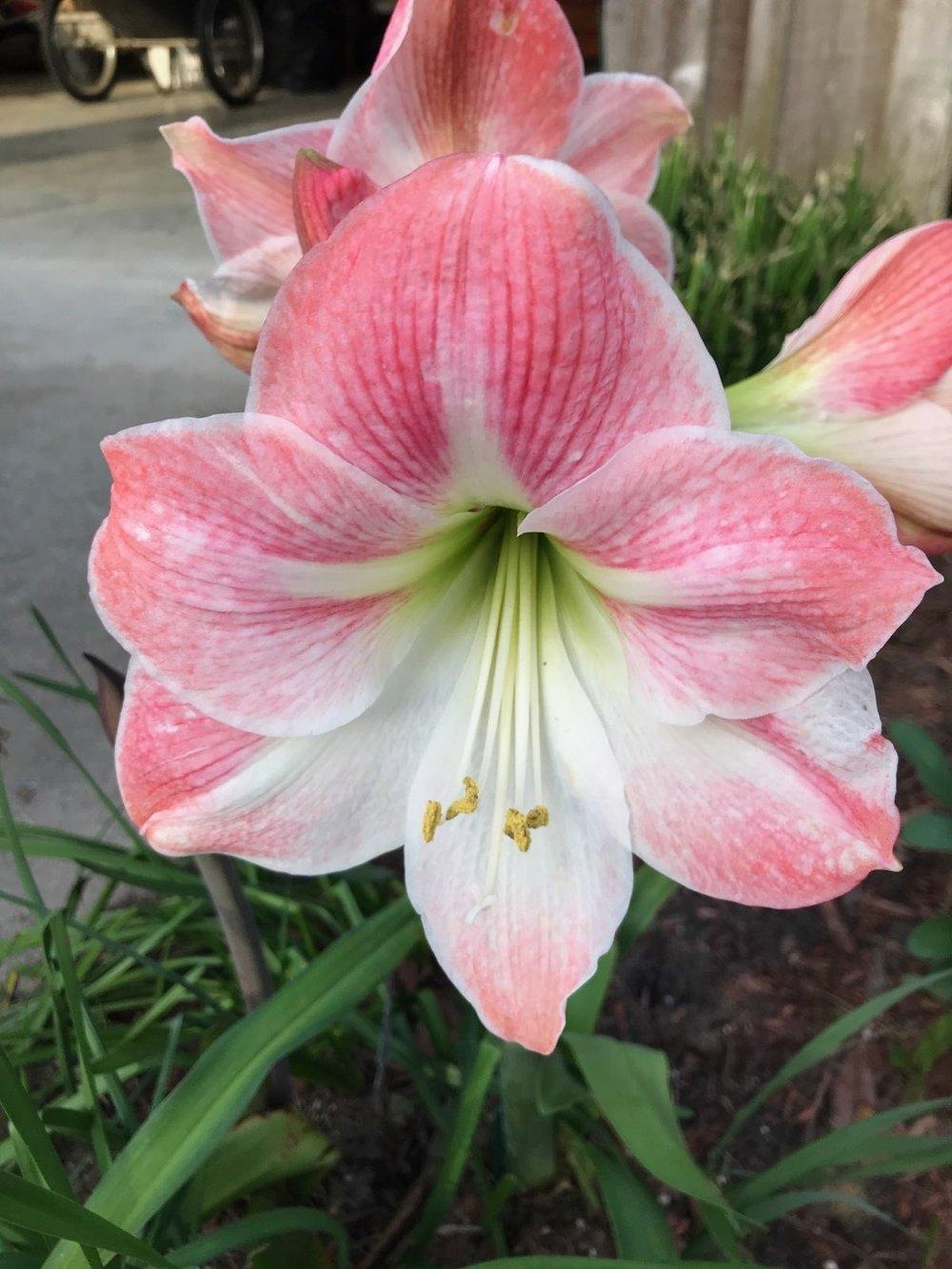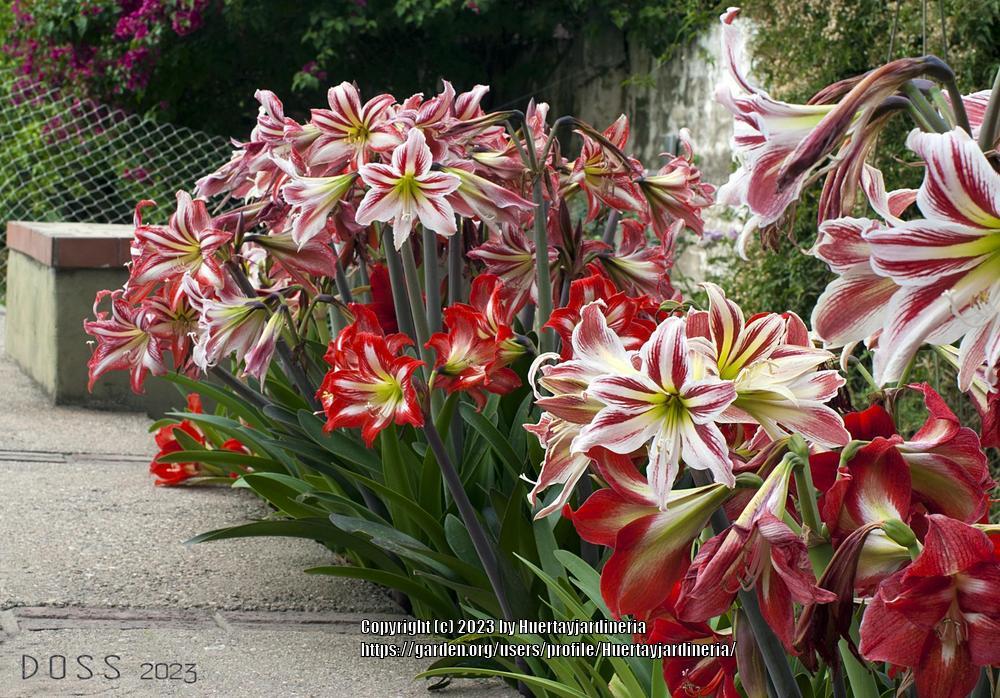
It usually takes amaryllis about 6 to 8 weeks from potting up to come into bloom. Each flower stalk will produce 2-6 flowers, and large bulbs may produce two or more flower stalks. Once the plant has come into bloom, moving it to a cool, bright location will prolong the flowering period. As the individual flowers fade, carefully cut them off. When all the flowers on a stalk have gone by, cut off the stalk a couple of inches above the neck of the bulb.

The long, strap-like leaves will continue growing actively through the spring and summer, so give your plants lots of sun and continue to water and fertilize regularly. After all danger of frost is past, the pot can be set outdoors in full sun for the summer months. Be sure to gradually harden off your amaryllis before setting it outside so that it is ready for exposure to outdoor sunlight and temperatures. If you keep your amaryllis indoors over the summer, provide the brightest light possible and continue to fertilize and water regularly.
Dormancy
In early fall the leaves will begin to turn yellow. At this point, gradually decrease watering; then stop altogether when the foliage has died back. Clip off the old leaves a couple of inches above the neck of the bulb. Bring the potted bulb indoors before the first frost and store it on its side in a cool place (50-55 degrees F) for 8 to 10 weeks. Don't worry if your bulb doesn't lose all its leaves. What is important is that the bulb receives that 8 to 10 week period of exposure to cool temperatures.
Reflowering
Once your bulb has had at least an 8-10 week dormant period or when you see the tip of the new flower stalk just beginning to emerge from the neck of the bulb, it's time to prepare for another season of bloom. If the bulb has outgrown its pot, repot it in a slightly larger one. Otherwise, carefully remove the top inch of potting mix from around the bulb while it's still in its pot and replace it with fresh mix. Any offsets (small bulbs attached to the side of the mother bulb) that have formed should be left in place for two seasons, after which they can be removed and potted up separately. Then care for the bulb just as you did the first time it was planted, and in 6 to 8 weeks you'll be enjoying another round of beautiful flowers.
If you have a number of amaryllis bulbs, you can bring them into flower in sequence just by staggering the times you awaken them from dormancy and pot them up. This way you can enjoy the spectacular blooms of these awesome plants throughout the winter and early spring.